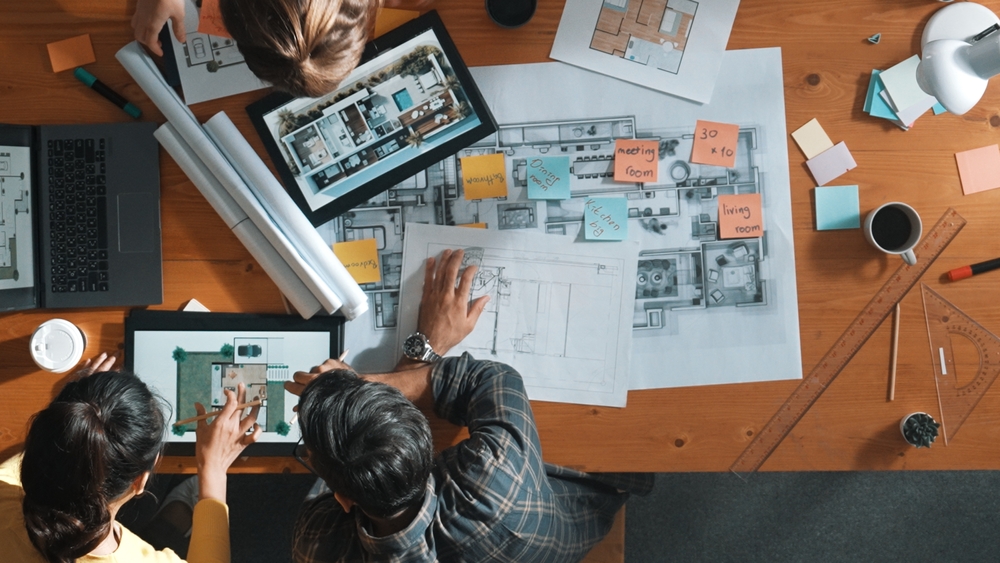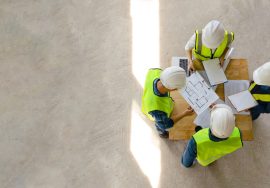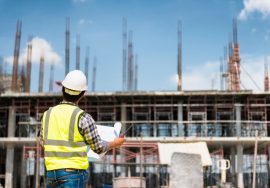Using 3D Printing in Construction: Benefits and Challenges
Using 3D Printing in Construction: Benefits and Challenges

3D printing is making waves in the construction industry, offering innovative ways to design and build structures. From printing houses to intricate architectural designs, 3D printing technology is transforming traditional construction methods. However, as with any new technology, there are both significant benefits and challenges to consider.
Benefits of 3D Printing in Construction
1. Reduced Construction Time
One of the biggest advantages of 3D printing in construction is the speed at which structures can be built.
- Traditional Methods: Construction processes like masonry and framing can take weeks or even months to complete.
- 3D Printing Impact: With 3D printing, walls, foundations, and entire buildings can be printed in a matter of days. For example, some companies have successfully printed houses in less than 24 hours, drastically reducing project timelines.
2. Cost Efficiency
3D printing helps save on labor, materials, and transportation costs.
- Labor: Since the technology requires fewer workers, labor costs are significantly reduced. The automation of the printing process means that fewer skilled workers are needed on-site, which is particularly beneficial in areas facing labor shortages.
- Materials: 3D printers use only the amount of material necessary for the design, minimizing waste. This contrasts with traditional methods where surplus materials are often ordered, leading to higher costs and excess waste.
- Transportation: Materials can be printed on-site, eliminating transportation costs and reducing the environmental impact of moving large quantities of building supplies.
3. Design Flexibility
3D printing enables architects and designers to push the boundaries of what’s possible in construction.
- Complex Structures: The technology allows for the creation of intricate designs and complex geometries that would be difficult or expensive to produce with traditional methods. Curves, custom textures, and non-standard shapes can all be easily printed.
- Customization: Each project can be uniquely tailored to the client’s needs, offering a level of customization previously unavailable in traditional construction. This flexibility allows for more creativity in architecture and interior design.
4. Sustainability
3D printing contributes to more sustainable construction practices.
- Material Waste: The precise nature of 3D printing reduces waste by using only the necessary amount of material, which contributes to more efficient use of resources.
- Recycled Materials: Some 3D printers can use recycled or sustainable materials like recycled concrete, plastic, or bioplastics, helping to lower the environmental footprint of construction projects.
- Energy Efficiency: By automating the construction process, 3D printing can reduce energy consumption on-site. Additionally, some 3D-printed structures are designed with better thermal insulation, reducing energy costs for heating and cooling.

5. Increased Safety
The automation and precision of 3D printing can lead to safer construction environments.
- Fewer Workers on Site: With fewer workers needed on-site, there is a reduced risk of accidents or injuries, particularly in hazardous environments.
- Risk Reduction: The technology can be used in remote or dangerous locations, such as disaster-stricken areas, allowing for construction without exposing workers to potential hazards.
Challenges of 3D Printing in Construction
1. High Initial Costs
The initial investment required for 3D printing equipment and materials can be prohibitive for some companies.
- Equipment Costs: Industrial-scale 3D printers are expensive, and the technology is still relatively new to the construction industry. This can result in high upfront costs for businesses looking to adopt the technology.
- Material Costs: While 3D printing reduces waste, the materials used can still be costly, particularly in comparison to bulk-purchased traditional materials. Additionally, specialized 3D printing materials may be harder to source.
2. Limited Material Options
Although 3D printing offers flexibility, the range of materials available for large-scale construction is still somewhat limited.
- Material Compatibility: While plastic and concrete are the most common materials used, there are limitations on the types of materials that can be used with 3D printers. For example, metals, wood, and other traditional building materials are not as easily integrated into 3D printing processes.
- Structural Integrity: Concerns exist regarding the long-term durability and structural integrity of 3D-printed buildings, especially in regions prone to earthquakes, hurricanes, or extreme weather conditions.
3. Regulatory Challenges
The use of 3D printing in construction is still new, and many regulatory bodies have yet to establish guidelines or building codes for 3D-printed structures.
- Permitting Issues: In many countries, there are no clear guidelines on how to assess the safety and compliance of 3D-printed structures. This can slow down the approval process for new projects.
- Insurance and Liability: Insurance providers may be hesitant to cover 3D-printed buildings due to the lack of precedent, making it challenging for developers to secure appropriate coverage for their projects.
4. Skilled Labor Shortages
While 3D printing reduces the need for manual labor on construction sites, it requires specialized knowledge to operate and maintain the equipment.
- Technical Expertise: The setup and operation of 3D printers require skilled technicians, and there is currently a shortage of professionals with experience in large-scale 3D printing. This can result in higher costs and potential delays as companies train or hire the right personnel.
- Maintenance: Regular maintenance and troubleshooting of the printers are necessary to ensure smooth operations, which may not always be easy in remote or developing areas.
5. Project Scale Limitations
While 3D printing is effective for smaller-scale construction projects, it has limitations when applied to large or complex structures.
- Size of Printers: Industrial 3D printers are large but not yet capable of constructing massive buildings like skyscrapers. This limits their application to smaller residential and commercial projects.
- Multi-Material Integration: Many complex structures require the integration of various materials and components, such as plumbing, electrical systems, and HVAC. These systems currently need to be installed manually, reducing the automation benefits of 3D printing for large projects.
Conclusion
3D printing is undoubtedly revolutionizing the construction industry, offering a wide range of benefits such as reduced construction time, cost savings, sustainability, and design flexibility. However, the technology still faces significant challenges, including high upfront costs, limited material options, regulatory barriers, and the need for specialized labor. Despite these challenges, the potential of 3D printing in construction is immense, and as the technology continues to evolve, it is likely to become an integral part of the future of building and design.
External Resources for Legal Guidance
3D Printing in Construction
Read more related articles to enhance your knowledge and make informed decisions
10 Essential Steps in the Building Construction Process
How to Choose the Right Materials for Your Construction Project








